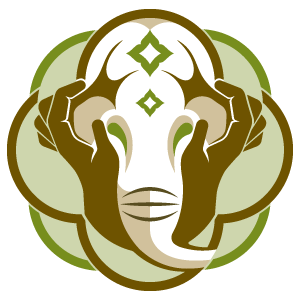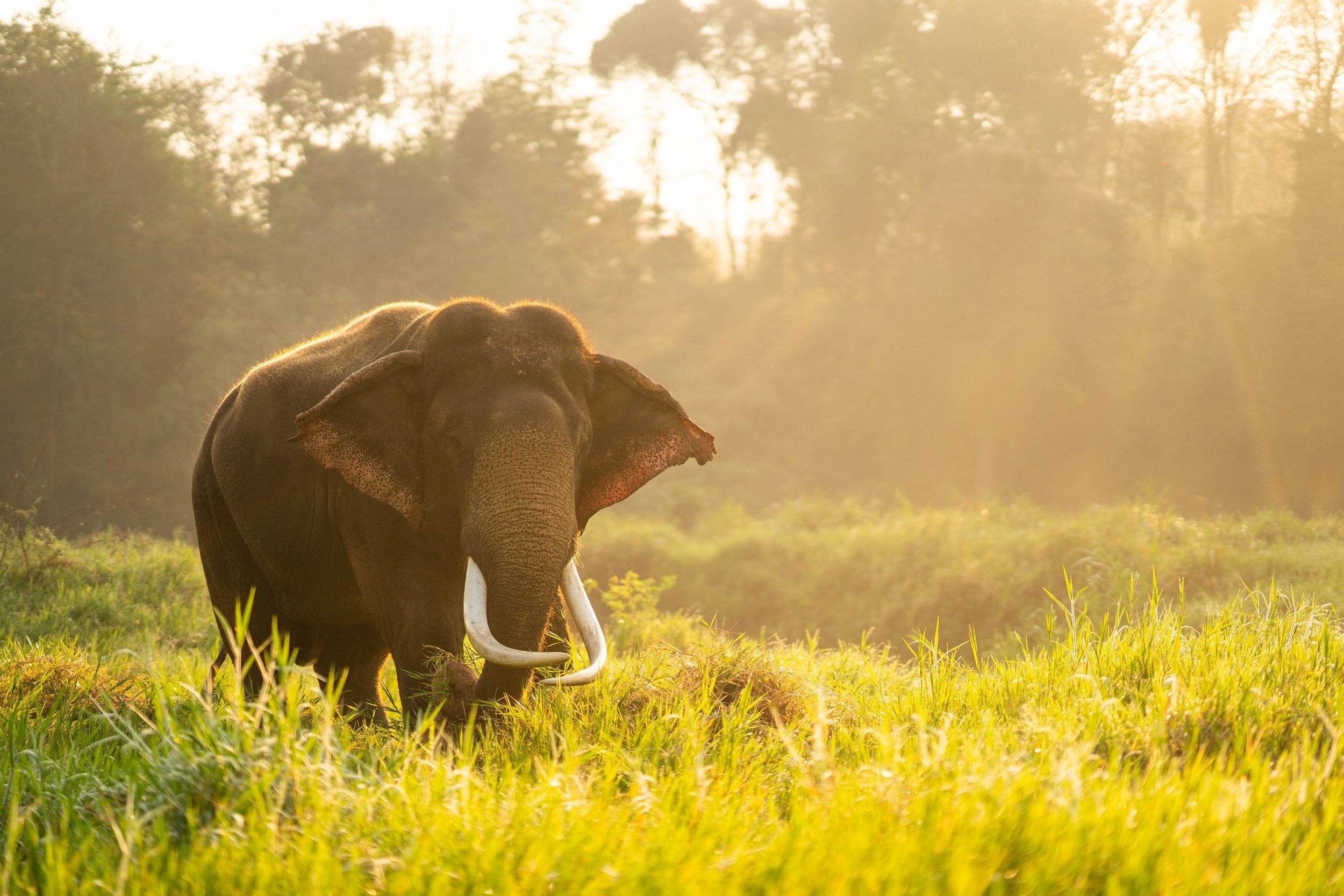Best Practices in Elephant Care
Best practices comprise five essential aspects of elephant care: veterinary care, nutrition, daily husbandry, the training of both elephants and mahouts, and housing. These best practices are described below. More details of best practices can be found in one of the most respected elephant medical textbooks, "Biology, Medicine, and Surgery of Elephants" by Murray E. Fowler and Susan K. Mikota, Blackwell Publishing (2006).
Veterinary Care
A qualified veterinarian is the foundation of good health care and has a direct impact on the elephant's health and well-being. A resident veterinarian is the best of all worlds, but many camps have too few elephants to justify a full-time veterinarian. Nearly as effective is a veterinarian who makes regular visits to provide preventative care, perform rigorous examinations of all elephants, and is on 24-hour call for emergencies. Nearly all range countries with Asian elephants, including India and Thailand, have excellent programs for training and licensing veterinarians, so over most of Asia it is possible to provide proper medical care even to elephants in remote camps and sanctuaries.
Nutrition
The feeding behavior of wild elephants is our best guidance for feeding them in captivity. Caretakers of captive elephants (mahouts) should replicate natural feeding opportunities as closely as possible. Because wild elephants can eat for 14 to 18 hours a day, elephants should be allowed to feed during the long hours of idle time rather than being chained with nothing to eat or manipulate. Elephants working in the tourist industry are sometimes rewarded with excessive amounts of high-sugar foods from tourists. While enjoyable for elephants and people alike, such foods are contrary to the elephant's natural diet of high-roughage, low-calorie grasses. Large quantities of fruits and vegetables should not be fed other than as a component of medical care and as rewards in training. All food sources should be free of pesticides and other agricultural chemicals to avoid food contamination. Elephants may enjoy carbohydrates, such as rice or bread, but starchy foods should be used sparingly. Just as with people, high caloric intake can produce excessive weight gain, which is a contributing factor to debilitating conditions such as arthritis and foot problems. Finally, foods not available in the wild (or eaten only rarely) lack the minerals, vitamins, and other nutrients necessary for good health, so when in our care, the goal is to give them what they need to stay healthy.
Daily Care
Providing clean drinking water, a proper diet, opportunities for social interactions, and regular training sessions along with daily baths, and maintaining healthy skin and feet are all important aspects of daily care. Elephants are intelligent and social creatures. In the wild, older elephants teach and discipline calves so they know their place in the family unit. In captivity, mahouts must help create and nurture social relationships that enable elephants to interact with one another safely. Regular training sessions provide mental and physical stimulation. It also develops trust between the mahout and elephant, allowing medical care to be provided with as little stress to the elephant as possible. Daily baths are important for skin care and it is also an opportunity to check the elephant's skin and feet for abrasions or cuts that may need medical attention.
Training
Training is twofold, for mahouts and elephants.
Training the mahout
A mahout attends the Southern Thailand Mahout Workshop 2022, funded in part by AES
Traditionally in Asia, the art of elephant handling and care was passed down from father to son. Unfortunately, in many places the job of mahout has become a lowly occupation. Many times the position is only taken when one cannot find another type of work and is often taken without any real elephant knowledge. However, there are renewed efforts to reestablish respect for the role of the mahout and to develop the knowledge of the mahout. The goal is to build long lasting relationships with the mahouts and make them aware that they have been entrusted with a crucial role in protecting a vanishing resource, an endangered species that has been part of human history for centuries. Instead of accepting a low level of expertise as satisfactory, it is essential that mahouts receive continual training in the care and management of elephants. A well trained staff manager and qualified teachers are prerequisites for building a strong team of skilled mahouts who value and feel proud of their job. Ideally, these teachers should be experienced mahouts. However, if an experienced mahout is not available, another option is western elephant handlers who practice proper elephant care and appreciate the history and culture of the mahout. Providing the opportunity to build English speaking skills and other educational opportunities, helps the mahouts see their work as a career and not just a job. Only knowledgeable mahouts and managers can ensure the well-being of elephants in their care and help ensure the future of the species.
Training the elephant
In the wild an elephant is taught from birth by its mother and aunts in the elephant family. Social structure and hierarchy is clearly delineated among adults and these boundaries are critical for survival. In captivity, training is important so that people and elephants may live together safely. It is also necessary for the health and well-being of the elephants. Training helps the elephants smoothly and efficiently follow commands for behaviors needed to receive medical care and daily husbandry. Basic commands, such as holding the mouth open for an oral examination, holding a foot up for examination, or holding still for wound care are key elements of good elephant husbandry. In addition, many elephants respond positively to training for mental stimulation and physical challenge.
Housing
Proper housing for elephants depends on many variables including age, health, temperament, group structure, temperature, and seasonal weather. Shelters should have good drainage, fresh water supply, protection from sun and rain, floors that can be cleaned easily, a strategy for removal of dung, and, if possible, electrical access for use in an emergency.
All of these best practices represent ideal targets for elephant facilities and sanctuaries and the foundations that support them. No one place may fully satisfy all ideals; however, the lesson we learned in evaluating facilities and sanctuaries is to consider whether they aspire to such best practices. The mission of AES is to support these aspirations in elephant care.





